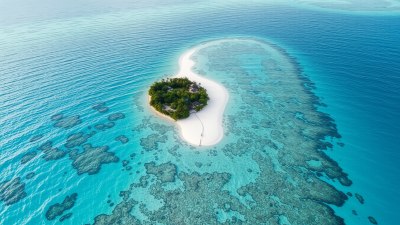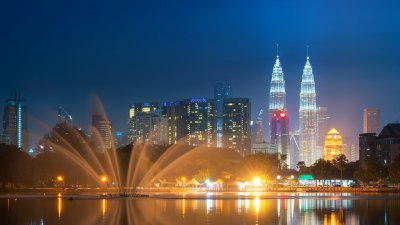When the Water Rewrites the Map in the Maldives
Discover the impact of rising sea levels on the Maldives and how water reshapes its geography.

Image created with Flux Schnell
The Maldives, a picturesque tropical paradise, is known for its stunning white-sand beaches, crystal-clear waters, and vibrant coral reefs. However, this idyllic nation faces an existential crisis as climate change and rising sea levels threaten to rewrite its map. This article explores the profound effects of water on the geography of the Maldives, the challenges posed by climate change, and the innovative solutions being implemented to preserve this unique ecosystem.
The Geography of the Maldives
The Maldives is an archipelago consisting of 26 atolls and over 1,000 islands, spread over roughly 90,000 square kilometers in the Indian Ocean. The highest point in the Maldives is just 2.4 meters above sea level, making it one of the lowest-lying countries in the world. Its natural beauty attracts millions of tourists each year, who flock to the islands to experience their unrivaled beauty and serene environment.
Climate Change and Rising Sea Levels
Climate change poses a significant threat to the Maldives, as global temperatures rise and polar ice caps melt, leading to rising sea levels. According to the Intergovernmental Panel on Climate Change (IPCC), sea levels could rise by over a meter by the end of the century if current trends continue. For the Maldives, this scenario is catastrophic, as even a rise of half a meter could inundate numerous low-lying islands, displacing whole communities and erasing entire cultural landmarks.
Impact on the Ecosystem
The Maldives' delicate ecosystem is closely tied to its geographical features. Coral reefs, mangroves, and seagrass beds provide essential services, including coastal protection and habitat for countless marine species. As sea levels rise, these ecosystems are at risk of being submerged, leading to a loss of biodiversity and the degradation of marine habitats. The disappearance of coral reefs, in particular, would have dire consequences for both local communities and the global environment, as they play a critical role in carbon absorption and protecting shorelines.
Socio-Economic Consequences
The socio-economic implications of rising sea levels in the Maldives are profound. The economy heavily relies on tourism, which contributes to about one-third of the national GDP and employs a significant portion of the population. If rising seas render islands uninhabitable, it could lead to a decline in tourism revenue and income for local workers. Moreover, freshwater resources are also under threat, as saltwater intrusion can contaminate drinking water supplies, exacerbating health and sanitation issues in impacted communities.
Community Displacement
As coastal areas become increasingly vulnerable, displacement becomes a pressing concern. Many Maldivian communities may face the prospect of relocation, leading to cultural dislocation and loss of heritage. The Maldivian government has already begun exploring options for relocating entire communities to higher ground or neighboring countries. However, this raises complex legal, social, and emotional challenges as displaced individuals grapple with losing their homes and cultural identities.
Innovative Adaptation Strategies
In response to these challenges, the Maldives is adopting innovative adaptation strategies to combat the effects of climate change. One example is the construction of artificial islands built with sustainable materials, which aim to provide new homes for displaced communities. Additionally, the government is investing in coastal protection initiatives, such as reef restoration projects that enhance the resilience of natural ecosystems against rising seas. Furthermore, there is an increasing focus on renewable energy sources, such as solar and wind, to reduce dependence on fossil fuels and decrease overall carbon emissions.
International Support and Collaboration
Addressing the challenges posed by climate change requires international cooperation and support. The Maldives has been an active participant in global climate agreements, advocating for immediate action to mitigate climate change and support vulnerable nations. Initiatives such as the Paris Agreement aim to provide financial resources and technological assistance to countries at risk. Furthermore, partnerships with non-governmental organizations and academic institutions play a vital role in conducting research, raising awareness, and promoting sustainable practices in the Maldives.
The Future of the Maldives
Looking ahead, the future of the Maldives hangs in the balance. While rising sea levels threaten to drastically alter the geography of the islands, proactive measures can help mitigate these impacts and preserve the delicate balance of this unique ecosystem. The continued commitment to sustainable development, community engagement, and international collaboration will be crucial in safeguarding the Maldives for future generations.
As water rewrites the map of the Maldives, the nation's resilience and adaptability will be tested like never before. The journey ahead is fraught with challenges, but by embracing innovative solutions and fostering global partnerships, the Maldives can navigate the storm of climate change. The world watches as this beautiful archipelago fights to keep its identity afloat amidst the rising tides, and the hope remains that future generations will cherish its beauty and culture as much as those who came before.











